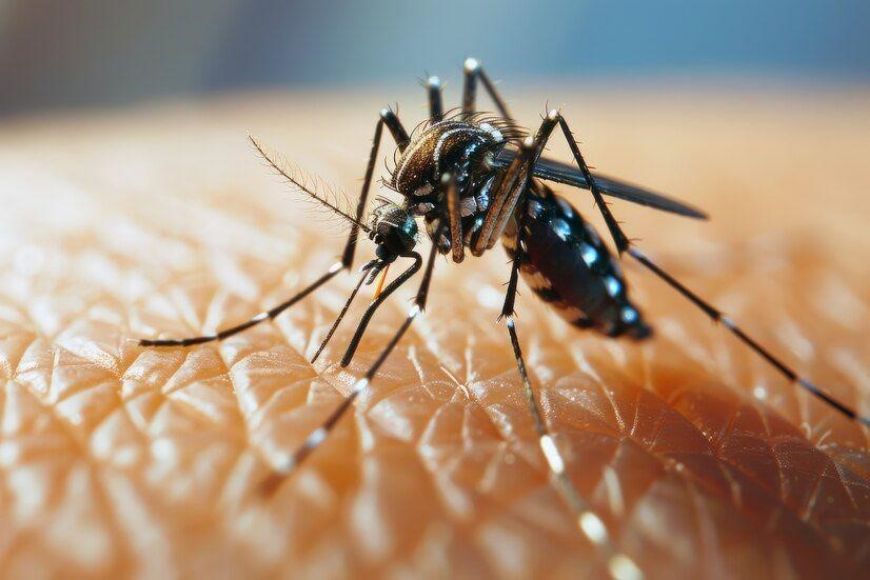Dengue Fever – An Epidemic?Leave a comment
Dengue: An Overview
Dengue is a mosquito-borne viral disease that has rapidly spread across all regions of the World Health Organization (WHO) in recent years. The dengue virus is primarily transmitted by female mosquitoes of the species Aedes aegypti, and to a lesser extent, Ae. albopictus. This mosquito also transmits other viruses such as chikungunya, yellow fever, and Zika virus. Dengue is widespread in tropical regions, with variations in risk influenced by factors such as rainfall, temperature, and unplanned urbanization (World Health Organization [WHO], 2025).
Severe Dengue
Severe dengue (also known as Dengue Haemorrhagic Fever) was first recognized in the 1950s during outbreaks in the Philippines and Thailand. Today, it is prevalent in most Asian and Latin American countries and has become a leading cause of hospitalization and death among both children and adults in these regions (WHO, 2025). There are four distinct, but closely related, serotypes of the virus that cause dengue: DEN-1, DEN-2, DEN-3, and DEN-4. Recovery from infection by one serotype provides lifelong immunity against that particular serotype, but cross-immunity to other serotypes is partial and temporary. Subsequent infections with different serotypes increase the risk of developing severe dengue (Centers for Disease Control and Prevention [CDC], 2025).
Transmission
The primary vector of dengue is the Aedes aegypti mosquito. The virus is transmitted to humans through the bites of infected female mosquitoes. After an incubation period of 4 to 10 days, an infected mosquito can transmit the virus for the rest of its life (WHO, 2025). Humans, whether symptomatic or asymptomatic, serve as the primary carriers and multipliers of the virus, providing a source of infection for uninfected mosquitoes. Infected individuals can transmit the virus for 4 to 5 days after the onset of symptoms, with a maximum transmission window of 12 days (CDC, 2025).
The Aedes aegypti mosquito primarily breeds in urban habitats and in man-made containers. Unlike other mosquitoes, Ae. aegypti is a daytime feeder, with peak biting periods occurring early in the morning and in the evening before dusk. Female mosquitoes bite multiple people during each feeding period. Aedes albopictus, a secondary dengue vector in Asia, has spread to North America and over 25 countries in Europe, primarily due to international trade in used tires and other goods (WHO, 2025). This mosquito is highly adaptable and can survive in cooler regions due to its tolerance to temperatures below freezing, as well as its ability to hibernate and shelter in microhabitats (CDC, 2025).
Characteristics
Dengue fever is a severe, flu-like illness that affects individuals of all ages, including infants, young children, and adults, though it rarely causes death. Dengue should be suspected when a high fever (40°C/104°F) is accompanied by at least two of the following symptoms: severe headache, pain behind the eyes, muscle and joint pains, nausea, vomiting, swollen glands, or rash. Symptoms usually last for 2 to 7 days after an incubation period of 4 to 10 days following a mosquito bite (WHO, 2025).
Severe dengue is a potentially fatal complication that can involve plasma leakage, fluid accumulation, respiratory distress, severe bleeding, or organ impairment. Warning signs typically appear 3 to 7 days after the first symptoms and include severe abdominal pain, persistent vomiting, rapid breathing, bleeding gums, fatigue, restlessness, and blood in vomit. The next 24 to 48 hours of the critical stage can be fatal without proper medical care (CDC, 2025).
Prevention and Control
Currently, the primary strategy to control and prevent the transmission of dengue virus is to combat mosquito vectors through various methods, including:
- Preventing mosquitoes from accessing egg-laying habitats by managing and modifying the environment.
- Proper disposal of solid waste and removal of artificial habitats.
- Regularly covering, emptying, and cleaning domestic water storage containers.
- Applying insecticides to outdoor water storage containers.
- Using personal protective measures such as window screens, long-sleeved clothing, insecticide-treated materials, coils, and vaporizers.
- Promoting community participation for sustained vector control efforts.
- Employing space spraying of insecticides during outbreaks as an emergency vector-control measure (WHO, 2025).
- Conducting active monitoring and surveillance to assess the effectiveness of control interventions (CDC, 2025).
Timely clinical detection and management of dengue patients can significantly reduce mortality rates, especially in cases of severe dengue (WHO, 2025).
WHO Advice
The World Health Organization advocates for an integrated approach to vector management, known as Integrated Vector Management (IVM), to control mosquito vectors, including those of dengue (WHO, 2025). The proximity of mosquito breeding sites to human habitation is a key risk factor for dengue virus transmission.
Prevention and control depend on reducing mosquito breeding sites through source reduction (e.g., removal and modification of breeding sites) and minimizing human-vector contact through adult control measures. Both strategies should be implemented simultaneously for effective control. Source reduction can be achieved by reducing the number of artificial water containers around homes (e.g., cement tanks, drums, used tires, empty bottles, and coconut shells). Barriers such as insect screens, closed doors and windows, long clothing, and the use of insect repellents can reduce human exposure to mosquitoes. In cases of outbreaks, space spraying with insecticide may be used as an emergency measure (WHO, 2025).
To protect against Aedes mosquitoes (the primary vectors of dengue), it is recommended to sleep under mosquito nets, particularly for young children, the elderly, or the sick, with or without insecticide treatment (WHO, 2025).
References
- Centers for Disease Control and Prevention. (2025). Dengue. Retrieved from: https://www.cdc.gov/dengue/
- World Health Organization. (2025). Dengue and severe dengue. Retrieved from: https://www.who.int/news-room/fact-sheets/detail/dengue-and-severe-dengue

